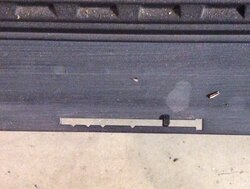MishMouse
Minister of Fire
Since pictures do not show actual distance, is the stuff that is located behind and on the right hand side of your stove set within the proper clearances?
As to flue temps, if you have a good draft you should be able to run it on notch 1 or even all the way off without having issues.
Sometimes when I have a good load going with a really strong draft, if I have my primary set at 2 or above my flue temps do stay a little on the high side. 350-400
 on a double wall pipe. But, when I cut it down to 1 or off it drops off between 150-250
on a double wall pipe. But, when I cut it down to 1 or off it drops off between 150-250 . So once your load gets going and the AB is engaged, you may have to run it on either 1 or off.
. So once your load gets going and the AB is engaged, you may have to run it on either 1 or off.If excessive draft is the issue here is a link to some info that may help: http://www.chimneysweeponline.com/hoxdraft.htm


